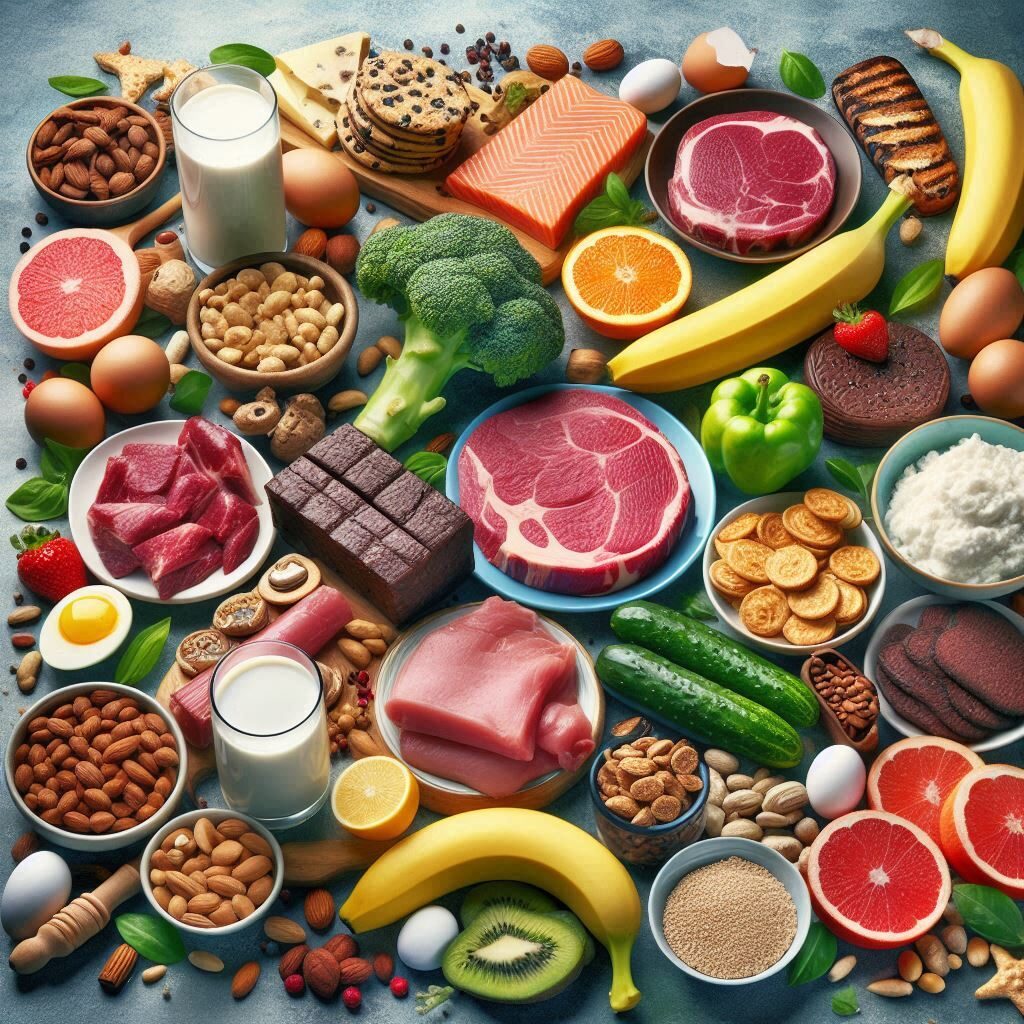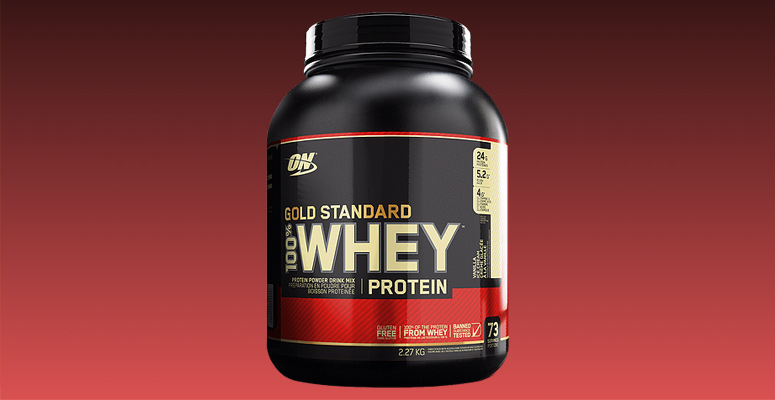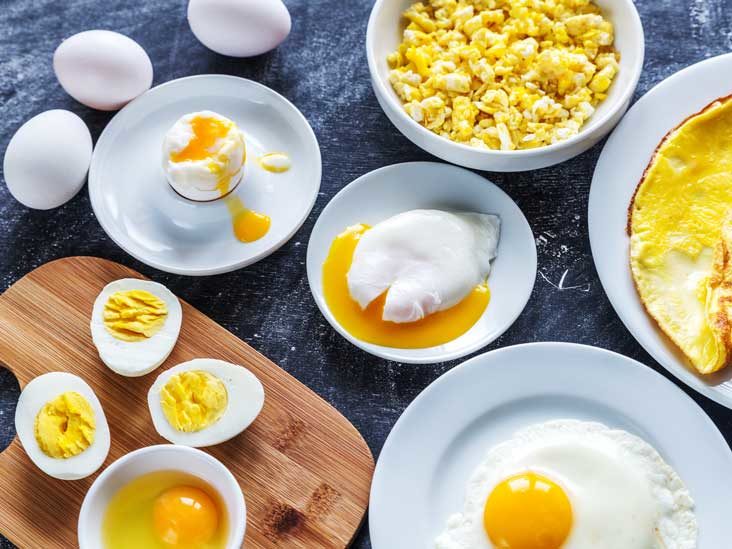Tofu
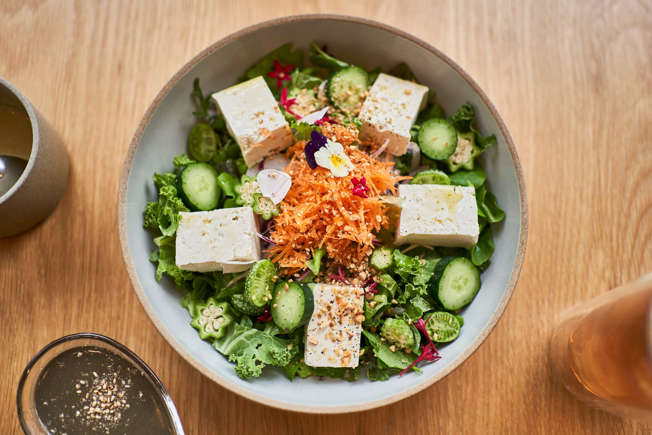
Made from soybeans, tofu is a complete plant-based protein that delivers 21.8 grams of protein in a half-cup serving. “Extra firm and firm tofu are great for stir fries and when you want the tofu to maintain its shape,” says Amidor. “Soft tofu can be battered and sauteed or pureed while silken tofu can be used in smoothies, blended and in sauces.”
Tem algumas sobras que você vai usar em futuras receitas de tofu? O tofu congela bem por até cinco meses. Basta descongelar na geladeira e drenar o excesso de líquido quando estiver pronto para usar
Feijão Preto
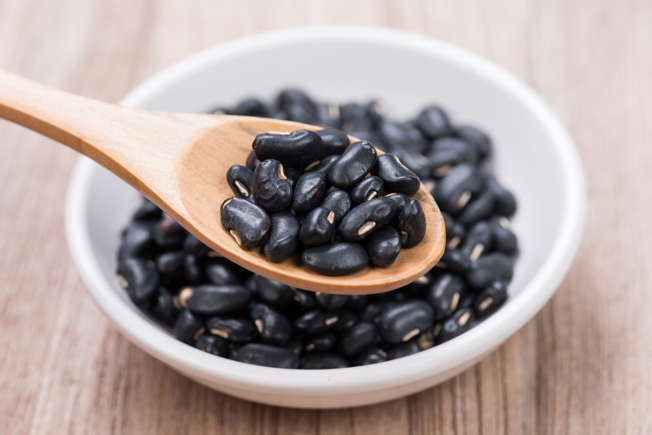
Feijão preto enlatado sem adição de sódio é uma ótima maneira estável de prateleira para bombear sua proteína enquanto também aumenta seu ferro e fibra – eles duram de dois a cinco anos fechados. Uma porção de meia xícara rende 6,99 gramas de proteína, e é uma adição adorável à pimenta, misturada com arroz ou jogada sobre uma salada. Você também pode consultar essas receitas que começam com uma lata de feijão preto se precisar usar algumas latas. Não consegue encontrar opções com baixo teor de sódio? Amidor diz que enxaguar o feijão pode reduzir o sódio em até 40%.
Pasta de amendoim
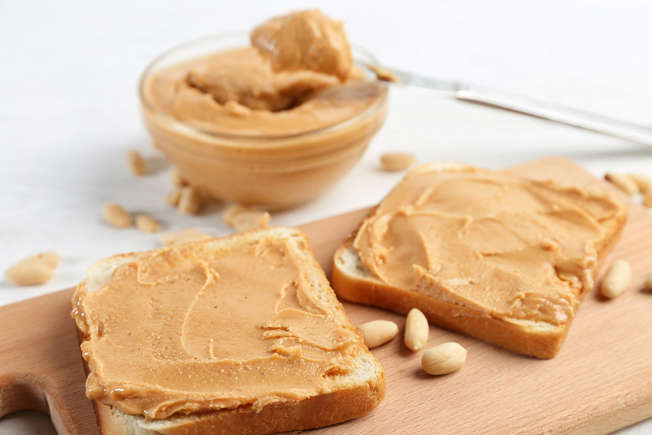
Quem não ama um sanduíche de manteiga de amendoim e geleia à moda antiga? Quando combinada com pão integral, esta é uma refeição completa que fornece 8 gramas de proteína – e não importa se você escolhe crocante ou liso. Você também obterá cerca de 20% da quantidade diária recomendada de niacina, 8% da fibra alimentar diária e 10% da vitamina E do seu dia em apenas duas colheres de sopa.
Um frasco aberto de manteiga de amendoim pode ser armazenado na despensa por até três meses, diz Amidor, depois deve ser armazenado na geladeira por mais 3-4 meses. Ou siga estas maneiras para usar um pote de manteiga de amendoim mais rápido.
Salmão
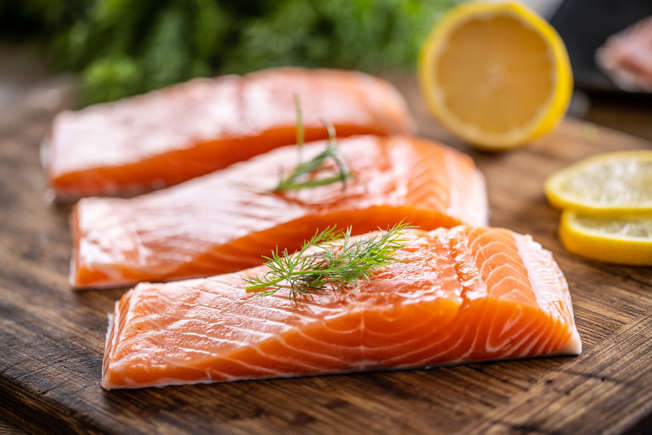
Fresh, frozen or canned, salmon is a protein powerhouse, with almost 19 grams per 3 ounces. “Whether you choose farmed or wild, it is up to you,” “If affordability is a factor, choose the cheaper one as you will still get all the nutrition, including heart-healthy omega-3 fats, which most folks don’t get enough of.” The Food and Drug Administration’s (FDA) Dietary Guidelines for Americans recommend at least 8 ounces of seafood per week based on a 2,000-calorie diet, and salmon is one of the “best choices” when it comes to limiting mercury.
Quinoa
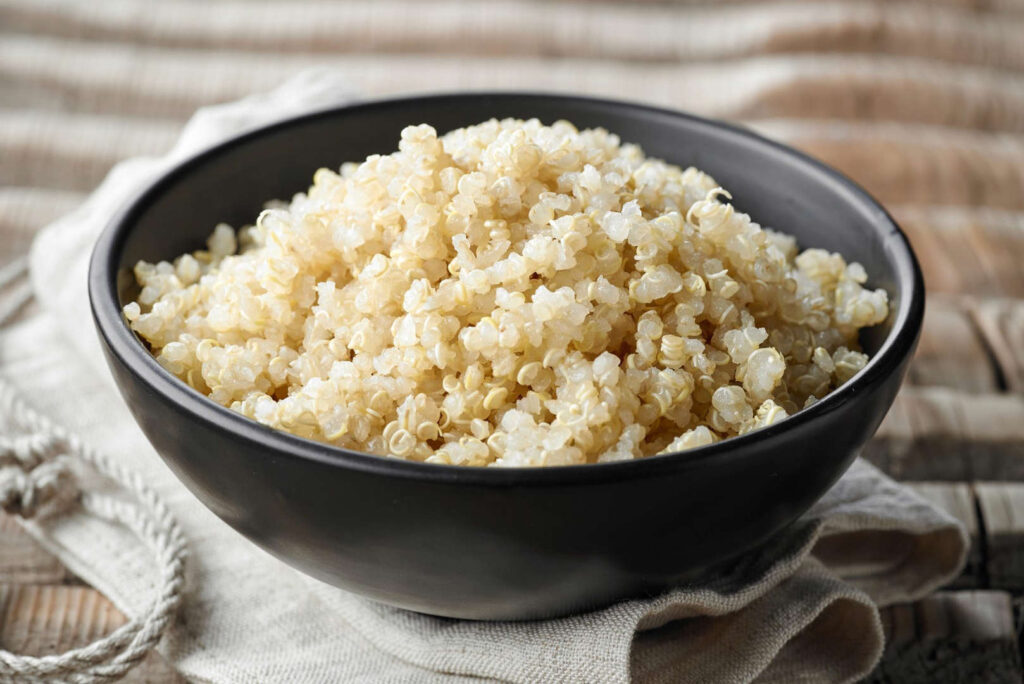
This seed is categorized as a whole grain, and aside from boasting 8.14 grams of protein in a cooked cup, it also provides manganese, phosphorus, magnesium, folate and thiamin. “Look for pre-rinsed quinoa, as the seed naturally has a bitter outer covering, which is washed off when rinsed,” says Amidor, noting that the white, red, black and rainbow varieties all have a similar taste and nutrition content.
Requeijão
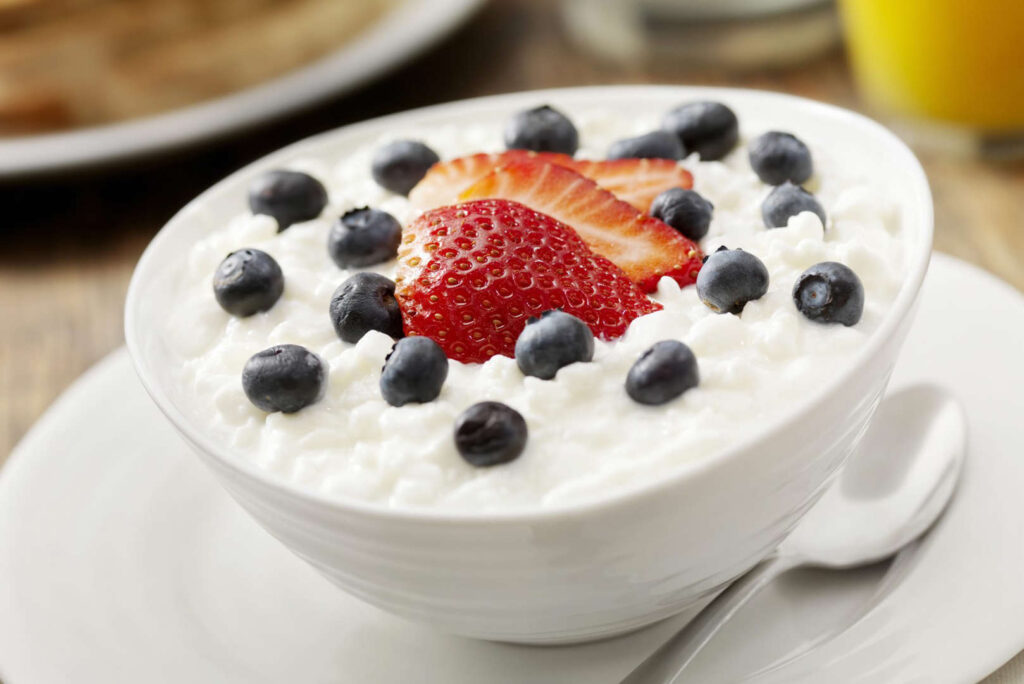
Cottage cheese packs 11 grams of protein into a one-cup serving, but the health benefits don’t stop there. “It also provides calcium, numerous B vitamins, selenium, iodine and phosphorous,” says Amidor. “Enjoy it topped with fruit and nuts as a snack or meal, and use blended cottage cheese in smoothies and dips.” Cottage cheese pancakes, anyone?
Iogurte grego
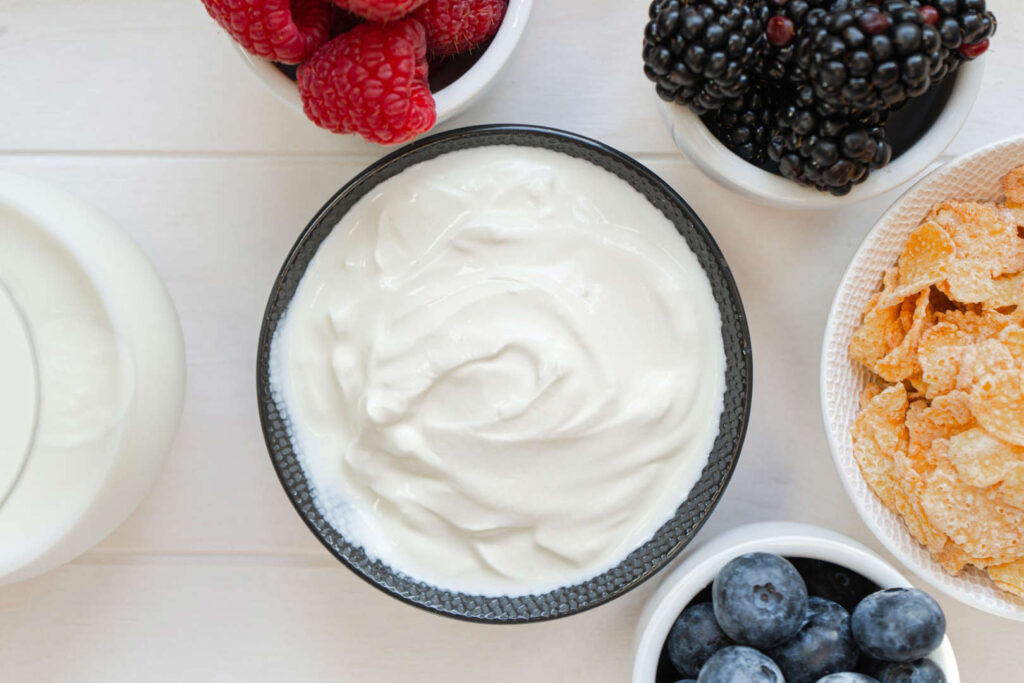
Hop off the regular yogurt train because the health benefits of Greek yogurt are unmatched—7 ounces of lowfat plain Greek yogurt contains 19.9 grams of protein. For those who consider dairy your foe, you may be able to tolerate Greek yogurt. “Due to the live, active cultures, some folks with lactose intolerance find Greek yogurt easier to digest, plus it has a lower lactose level compared to other dairy foods like milk,”. Greek yogurt is an easy replacement for mayo in many recipes and also works as a decadent dessert or stuffed in French toast.
Frango
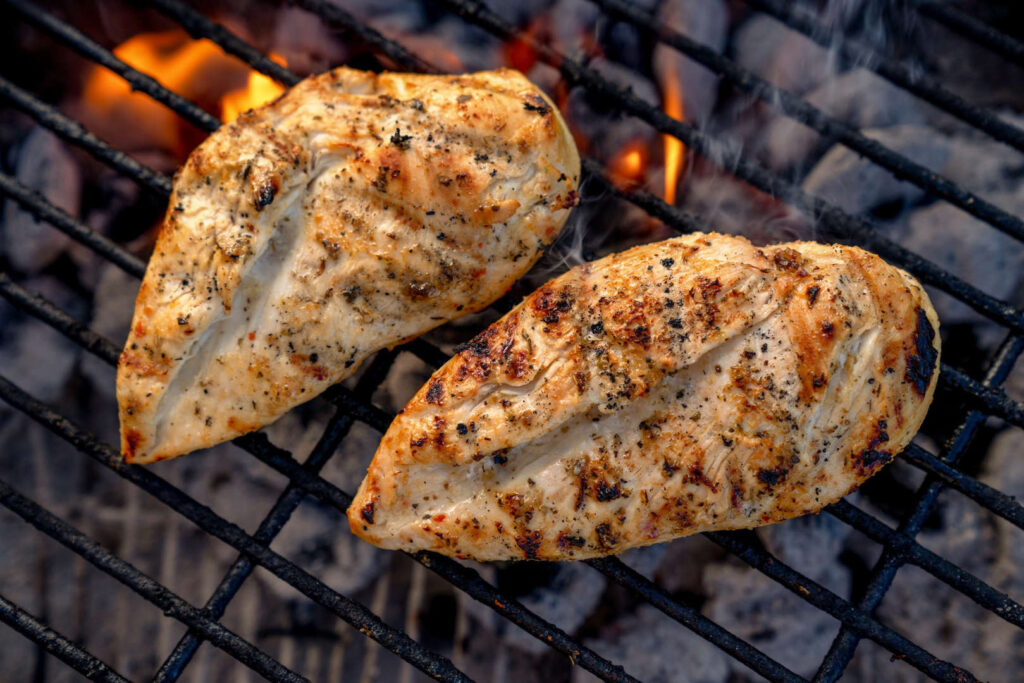
Depending on which part of the chicken you’re eating (breast or thigh), 3 ounces of chicken contains between 20 and 26 grams of protein. “While many people reach for the breast because it’s leaner and a little higher in protein than the thigh, thighs can also fit into a healthy diet and tend to be more flavorful,”. “Chicken thighs also offer more iron than breasts, which can be helpful to meet your iron needs.”
Turquia
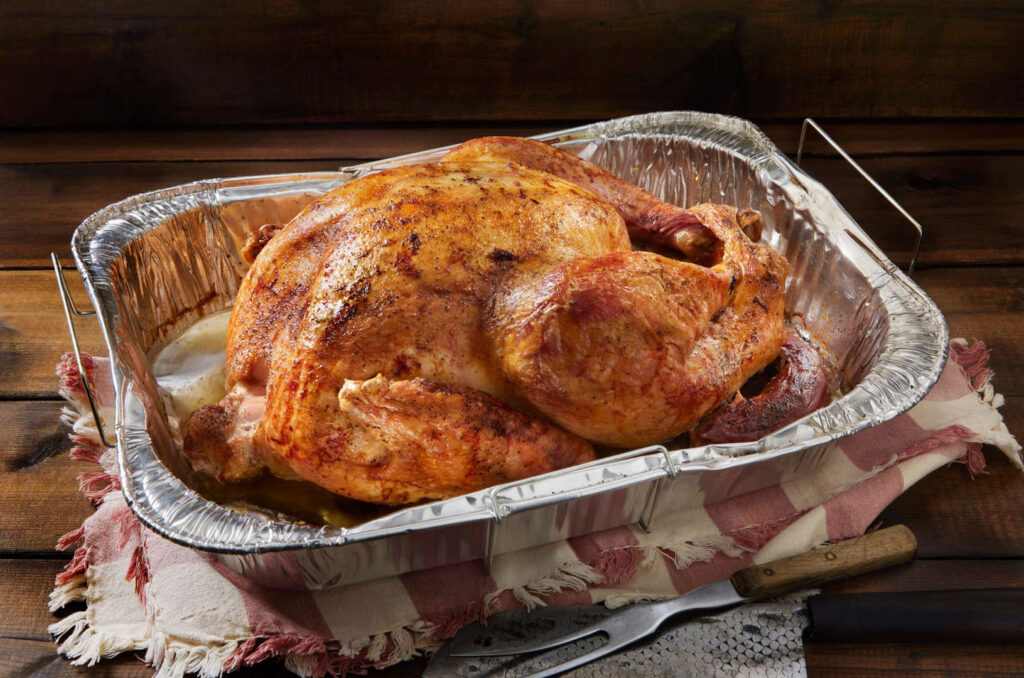
Similarly to chicken, turkey protein varies between 22 and 26 grams of protein for 3 ounces, depending on the cut—white meat will have slightly more protein than dark meat. “I always encourage people to choose the cut they enjoy most because the difference in fat isn’t going to make a significant difference in your health,”.
Edamame
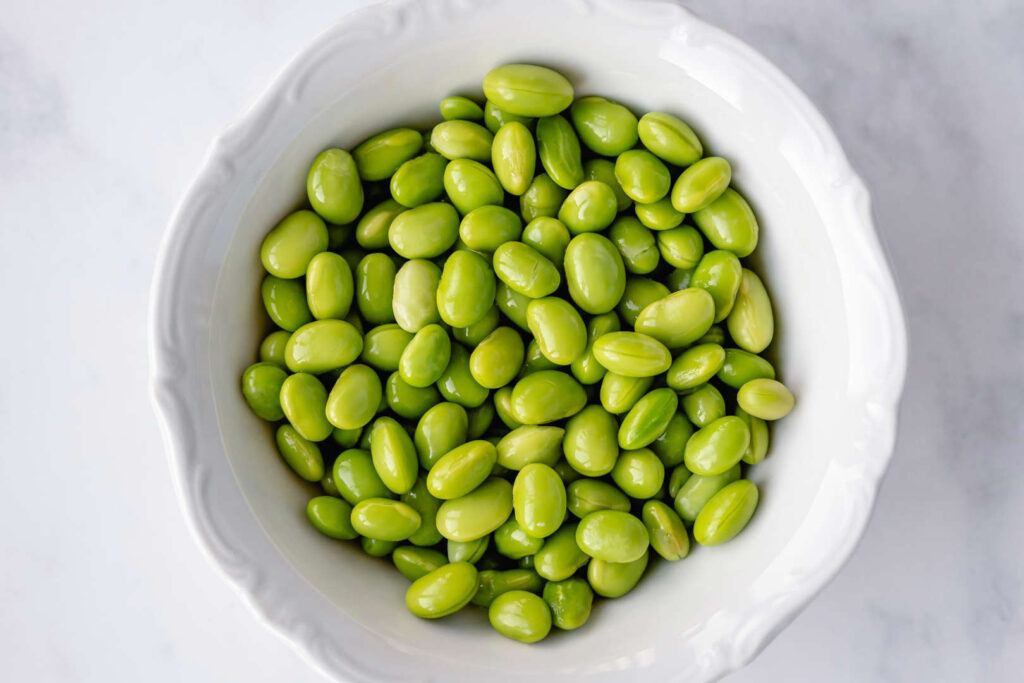
Edamame, or soybeans in the pod, is a solid source of plant-based protein with 9 grams per half-cup. It’s also a good source of fiber, calcium, iron, magnesium and folate. “Edamame is also known for having soy isoflavones, which may be particularly beneficial for peri- and postmenopausal women, as isoflavones are linked to fewer menopause symptoms, increased bone density and lower rates of breast cancer,”.
Tempeh
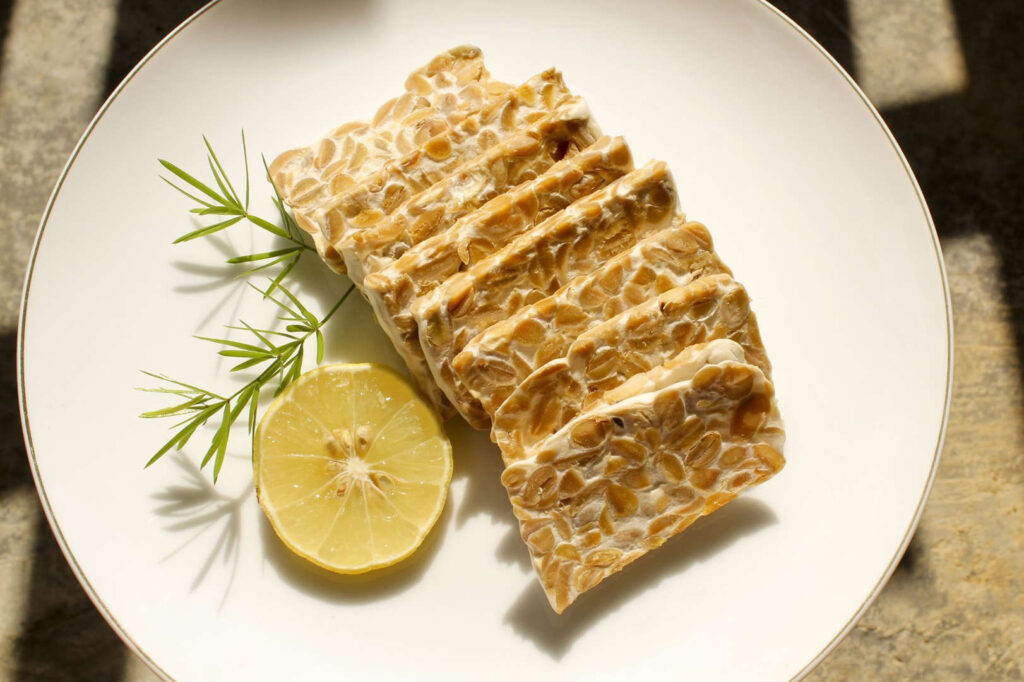
O tempeh, que é feito de soja fermentada, não só oferece 15 gramas de proteína à base de plantas por porção de 3 onças, mas também é embalado com fibras, ferro, cálcio e fibras. Como outros alimentos fermentados, contém alguns probióticos, que may support gut health. Aqui estão pelo menos cinco maneiras de cozinhar tempeh para ajudá-lo a começar a incorporá-lo em seus roundups de almoço e jantar.
Bico
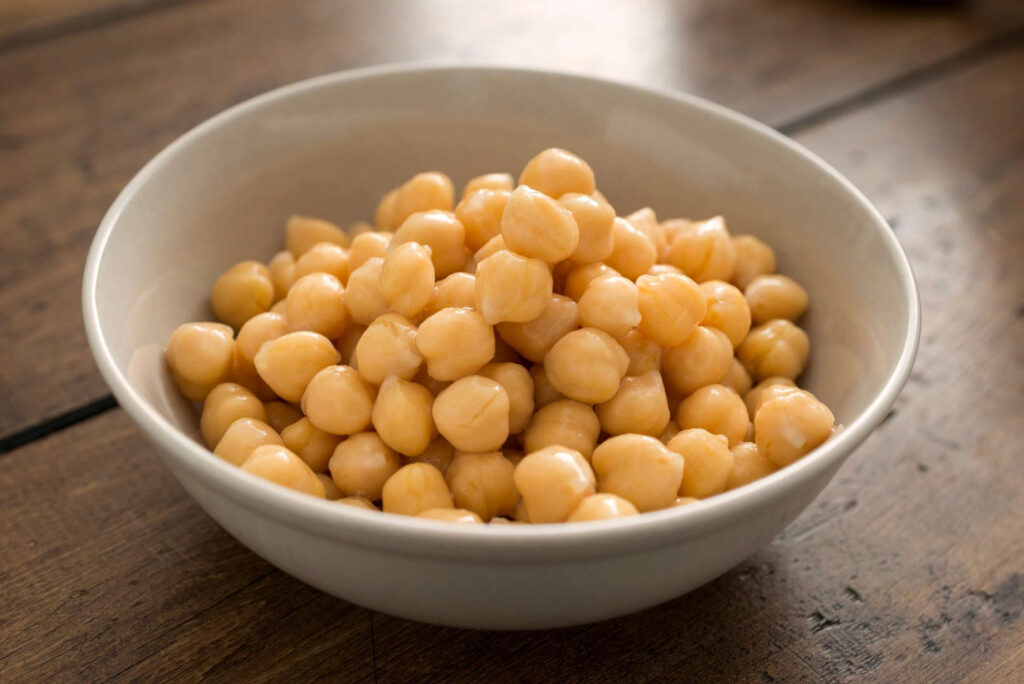
Além dos 7 gramas de proteína por meia xícara, o grão-de-bico também embala 6 gramas de fibra de enchimento de barriga. Eles são cheios de vitaminas e minerais, incluindo vitaminas do complexo B, ferro, zinco e magnésio também. Se você comprar grão-de-bico enlatado, Anzlovar recomenda escolher opções com baixo teor de sódio ou sem adição de sal. Se você não conseguir encontrá-los, enxaguar-os reduz o teor de sódio.
Atum
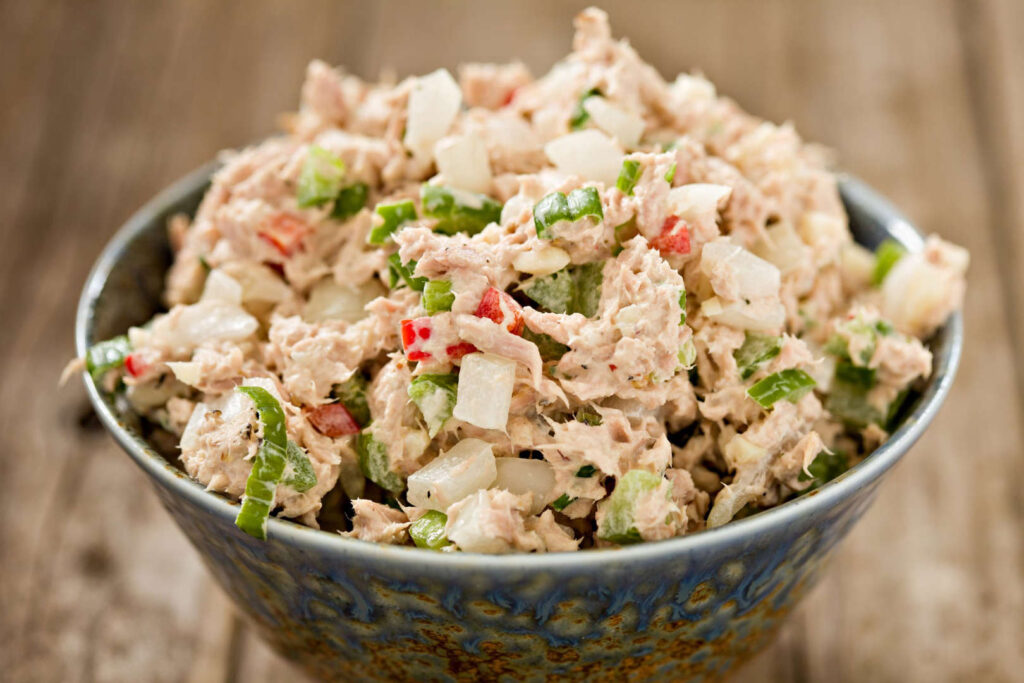
Canned tuna is an easy and inexpensive way to add protein to your diet. Just 3 ounces (a little more than half a can) contains 21 grams of protein. “It’s also a good source of omega-3 fatty acids, which offer tons of health benefits from supporting your heart to your brain,” says Anzlovar. “Canned tuna in olive oil can offer additional healthy fats and tends to be more flavorful and a little less dry than tuna packed in water.” One word of caution: Tuna is a higher-mercury fish listed under “good choices” by the FDA, so only eat this once a week.
Sementes de cânhamo
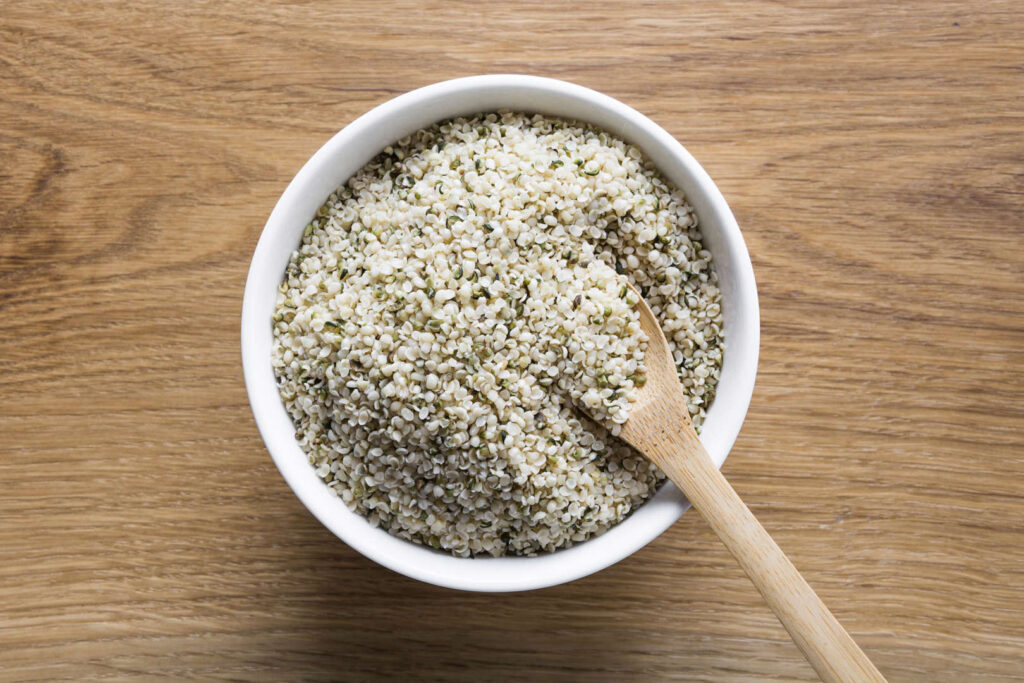
Estas pequenas sementes da planta de cânhamo podem ser minúsculas, mas oferecem grandes benefícios. Três colheres de sopa de sementes de cânhamo contêm 10 gramas de proteína, 20% de suas necessidades diárias de ferro e várias vitaminas do complexo B (incluindo folato). Anzlovar diz que eles são uma ótima maneira de consumir ômega-3 à base de plantas, o que pode ser útil para pessoas que não comem peixe. Não é à toa que eles são uma maneira fácil de adicionar proteína aos smoothies.
Lentilhas
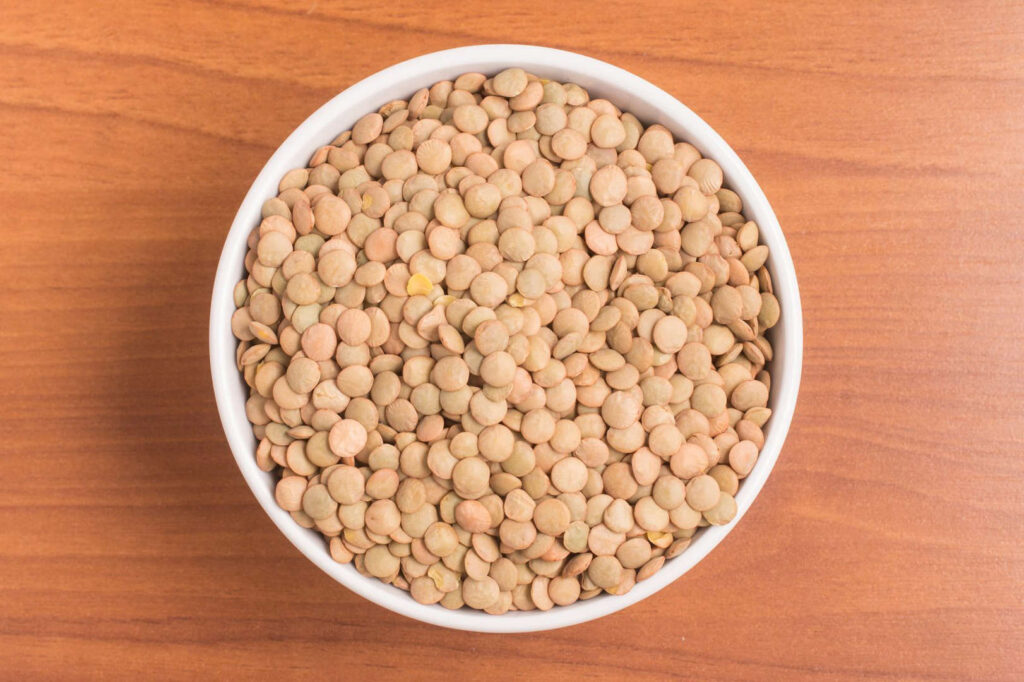
All lentils (black, green or red) pack in around 9 grams of protein and 8 grams of fiber per half cup, along with several vitamins and minerals. “They’re one of the best sources of plant-based iron, with over 30% of your daily needs,” says Anzlovar. If lentils are a little unfamiliar, start with one of these lentil recipes or whip up a batch of vegan lentil soup in just 30 minutes.
